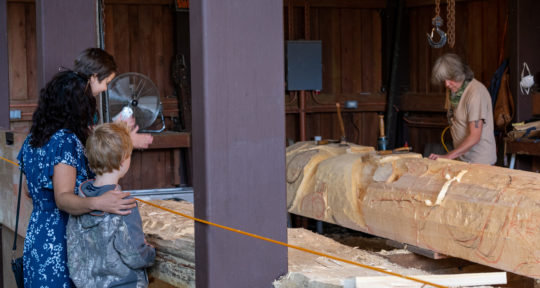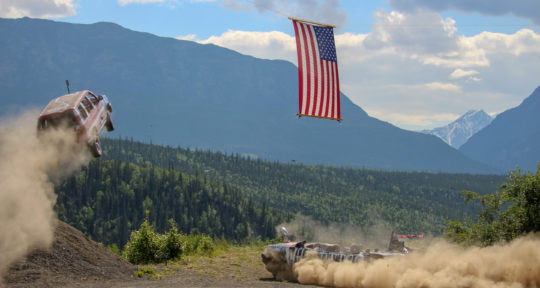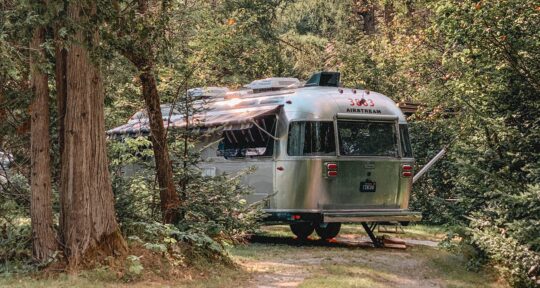While New Yorkers and Angelinos might feign cool indifference to a celebrity sighting in their neighborhood, it seems almost impossible for Alaskans to not want to take a picture with one “Star” in particular. Star, the unofficial mascot of Anchorage, Alaska’s most populous city, is the seventh reindeer since the 1960s to bear the name and title.
During a short walk in downtown Anchorage’s Delaney Park Strip in late October, a group of dog walkers, a solo traveler, a handful of runners, and three separate strolling couples all come over to say hello to Star. At one point, a bus pulls over and the kids on board pile out for a photo op.
“You can get closer, he won’t bite,” says Albert Whitehead, Star’s owner, before pulling a bag of sliced carrots out of his parka. When he asks, “Do you want to feed him?” nobody turns down the opportunity.
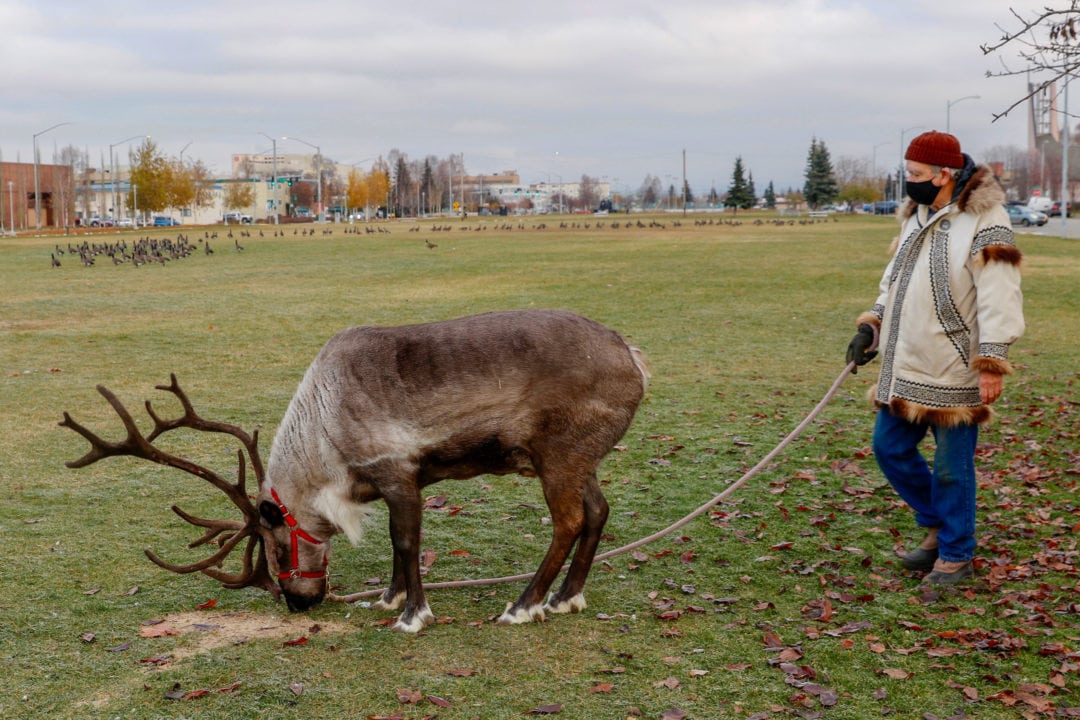
An Alaska pet
The current Star is not just Anchorage’s beloved mascot, he’s also Whitehead’s pet; the 3-year-old reindeer was raised at Whitehead’s home on the corner of 10th Avenue and I Street. Whitehead has owned only two reindeer, though he was close friends with Ivan and Oro Stewart, who started the Anchorage tradition, and had a hand in raising Stars number one through five.
According to Whitehead, getting the first reindeer was Oro’s idea. “She told Ivan that she wanted an Alaska pet and he thought she wanted a husky,” Whitehead says.
The original Star—and the five that followed—were all female reindeer. Whitehead says that Oro named the first one Star because she had a star-shaped white patch on her forehead. She kept the same name for all the following mascots so that local kids would always know who to say hello to.
The first Star lived to be 23 years old (the average lifespan of a reindeer is 15 to 18 years). The second and third died young; the former was kidnapped for food and the latter accidentally ate plastic bags. The fourth lived to be 14, and the fifth and final one owned by the Stewarts died of a bacterial infection when she was a calf.
A loophole
The Stewarts had received special permission to keep their reindeer in town; when Oro passed away in 2002, everyone—including Whitehead—assumed that the reindeer tradition had gone with them. Months later, while Whitehead was in the process of purchasing the Stewarts’ property, he discovered that the right to have a reindeer wasn’t bestowed on the Stewarts specifically, but rather on the residents of the house.
Whitehead would be able to carry on the tradition. To him, it seemed like a no-brainer, but even with the rights, it was still challenging for Whitehead to get the next reindeer. It’s illegal to own an Alaska reindeer unless you’re an Alaska Native; the five reindeer that had lived with the Stewarts had been leased to them.
But the same year that Oro died, the law was amended and leasing to non-Natives was no longer an option. The law states that non-Natives are not allowed to own Alaskan reindeer, specifically. So the Reindeer Farm in Palmer imports theirs from Canada—even those born in Alaska are considered Canadian reindeer by virtue of their ancestry. The loophole allowed Whitehead to have Stars number six and, now, seven.
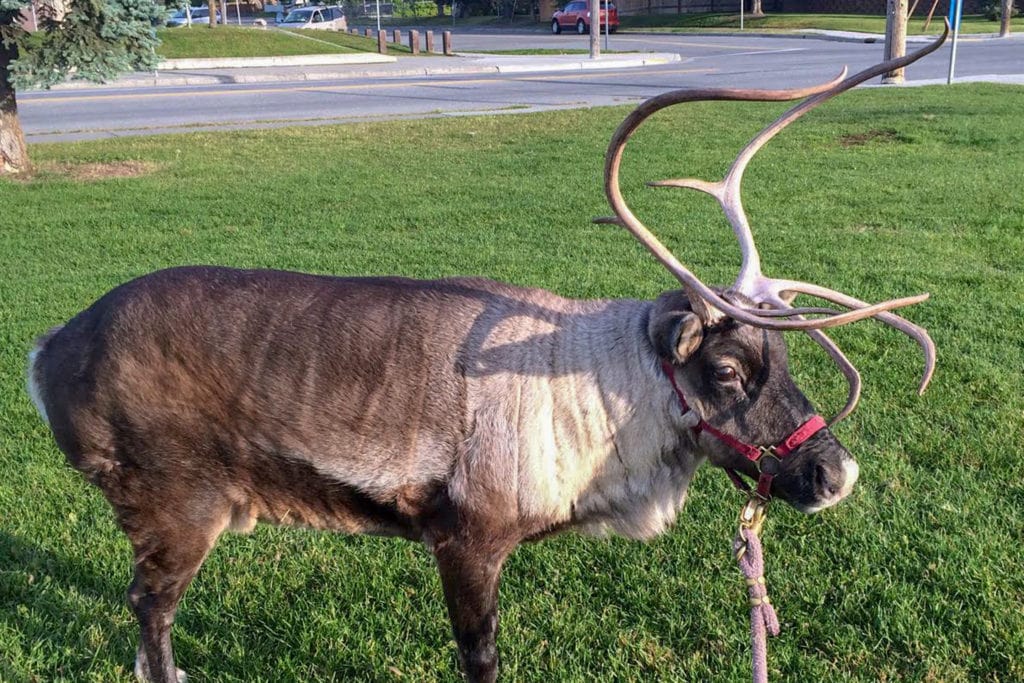
Proud parent
While Star’s location is noted on maps, the reindeers have never been an official tourist attraction or business. They’ve been a part of Whitehead’s family.
Whitehead says he looked for temperament and certain behavioral traits in potential Stars number six and seven, but the real deciding factor was that both iterations showed unrestrained interest in being near him during his multiple visits to the Reindeer Farm.
“He always came to me when I went out there,” Whitehead says of the current Star. “So I thought, ‘This guy wants to be with me.’”
In the summer months, Whitehead leaves the back door open and Star will wander in and out as he pleases (at least until his antlers regrow and he can’t get in the door). Occasionally, Whitehead will catch tourists standing on the sidewalk outside his home, shocked that there’s a reindeer in his living room.
Like any proud pet parent, Whitehead has oodles of photos and videos of his fur babies. Ask and he’ll show you a video of the current Star dancing around his backyard and lying down in his house like “a perfect gentleman.” The previous Star would play with Whitehead’s dog, Pepper, and put her front hooves on Whitehead’s shoulders—it was her way of telling him it was time to get a move on if he chatted for too long while on a walk.
Reindeer games
Whitehead’s first Star was arguably better known than her predecessor. She lived for 15 years and when she was young, she could run errands with Whitehead, accompanying him into the shops that used to populate downtown (municipal code dictates that live, non-service animals aren’t allowed in restaurants, which now dominate the neighborhood). Locals still recall seeing Star patiently waiting in a (now closed) wine store while Whitehead chose bottles and chatted with staff. These days, you’re more likely to see Star walking around downtown festivals like Fur Rondy and Summer Solstice, or relaxing with Whitehead at Westchester Lagoon.
Before the COVID-19 pandemic, Whitehead would walk Star around downtown about four times a week. Now, considering the number of people who come up to talk to him while he’s out with Star—and the fact that he’s in his 80s—he’s hesitant to do the strolls. But because he’s retired, he’s able to spend much of his day hanging out with Star in his enclosure or backyard, playing (reindeer) games, and teaching him tricks—that is, when Star isn’t filching apples off the tree.
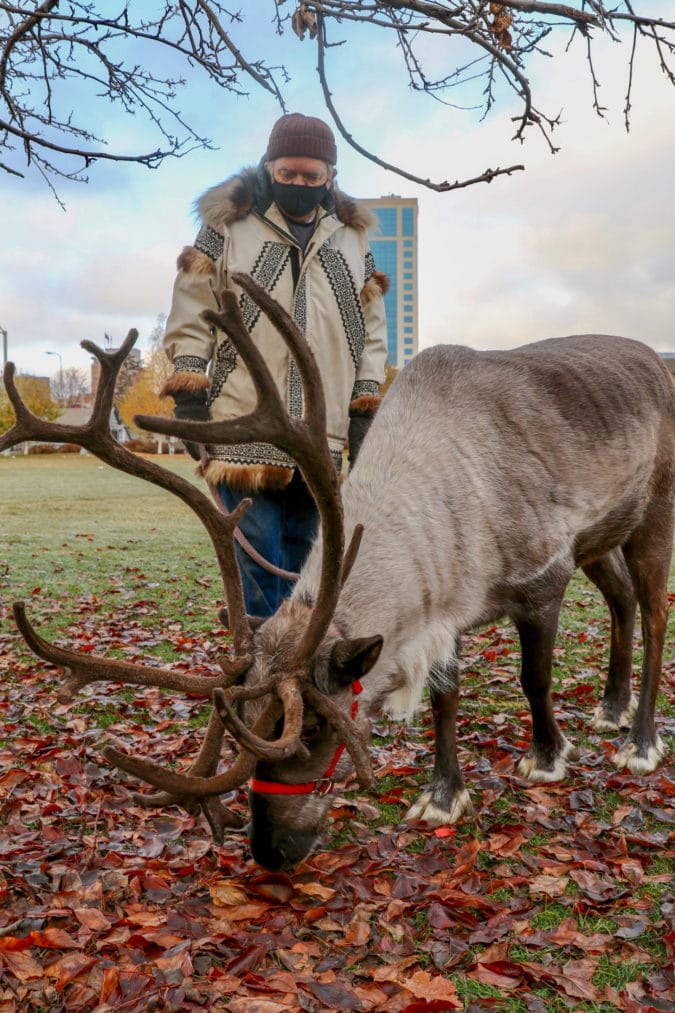
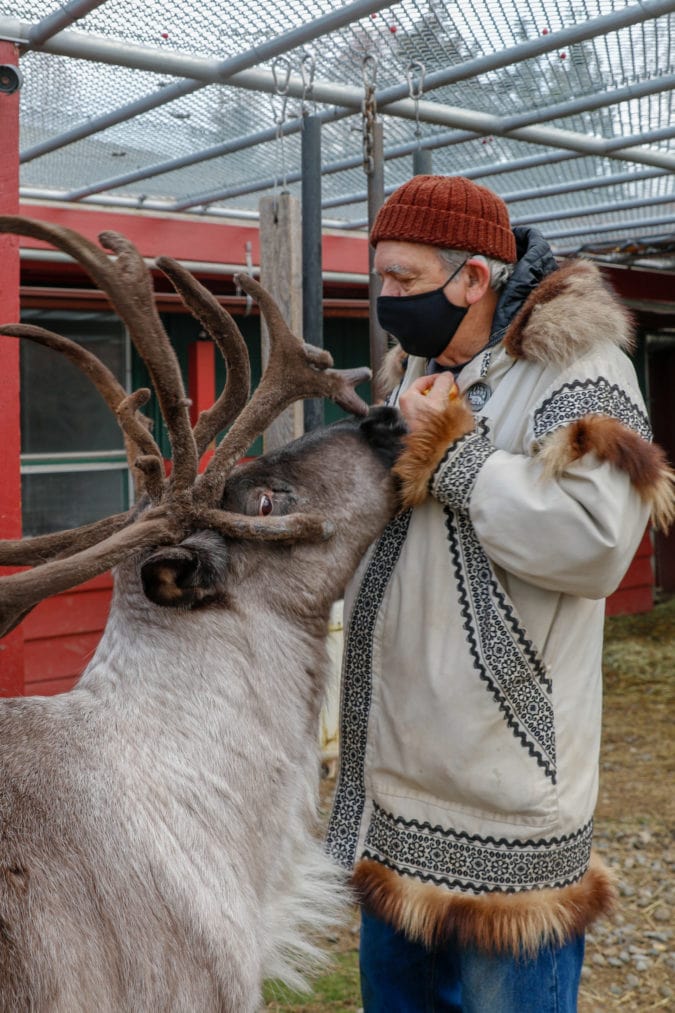
Star has fans well beyond state lines—the previous Star appeared on National Geographic Wild, Animal Planet, and in national news media articles (one such feature netted Whitehead five marriage proposals from women across the country). Whitehead thinks part of the reason people are so enamored with them—besides the novelty of seeing a reindeer in a city center—is because both of his Stars have loved humans, something Whitehead attributes to the time he’s personally spent with them. If he were to bring home an older reindeer, it’s not likely that it would be as excited about visitors.
“[Star is] bonded to us,” Whitehead says. “We’re his family.”
Continuing the tradition
Whitehead isn’t sure if the tradition will continue after he’s gone. Someone could inherit or purchase his house and continue to keep a pet reindeer there, but currently nobody is chomping at the bit to fill that role (though there are plans in place for the current Star if something should happen to Whitehead). Reindeer are a lot of work and fairly expensive to maintain.
While the Stewarts’ Stars ate wilted vegetables donated by a local grocery chain, the current Star eats a special blend of food that Whitehead purchases from Alaska Mill and Feed. In the summer, Star eats between 9 and 12 pounds of grain a day as his antlers grow back; in the winter, he’ll eat less than half that.
And it’s not just feeding and cleaning—a large part of the role is answering questions from adoring fans and inquisitive passersby. It’s hard not to be curious about why there’s a reindeer in downtown. Though that seems to be the part in which Whitehead delights the most—talking with his community about Star and his place in it.
“Most of the people in Anchorage think they own Star,” Whitehead says. “I just get the privilege of taking care of her and looking after the town pet.”

